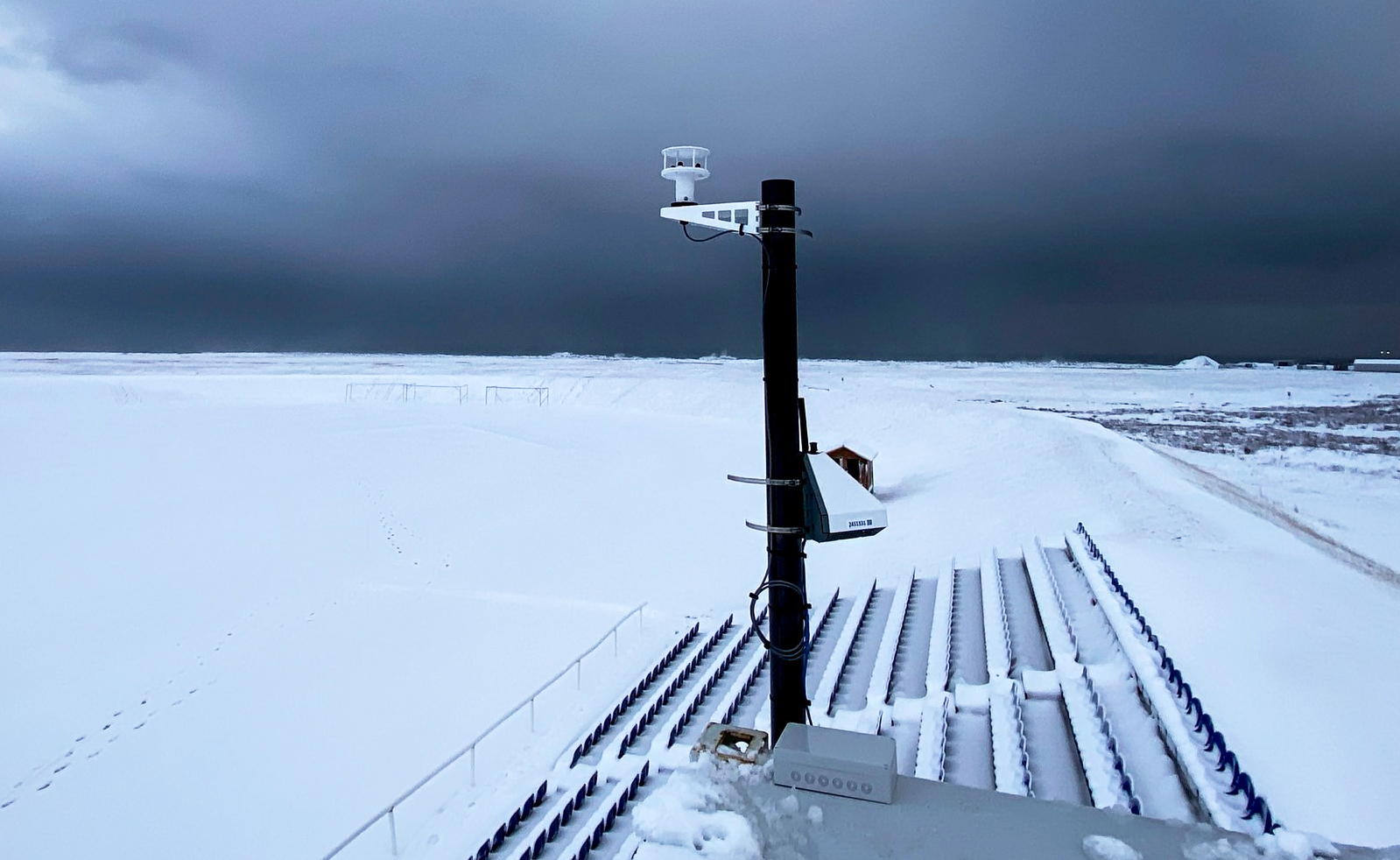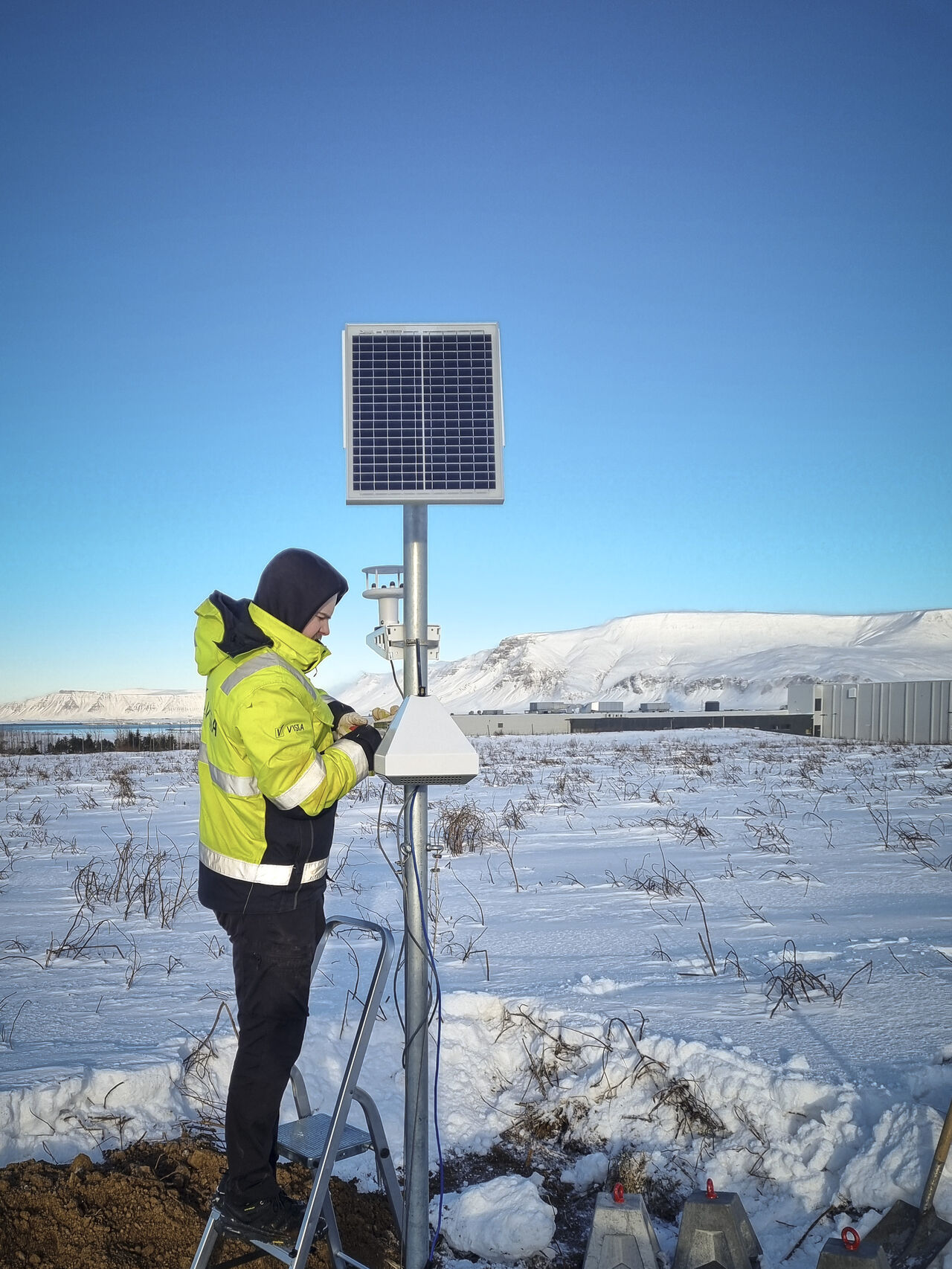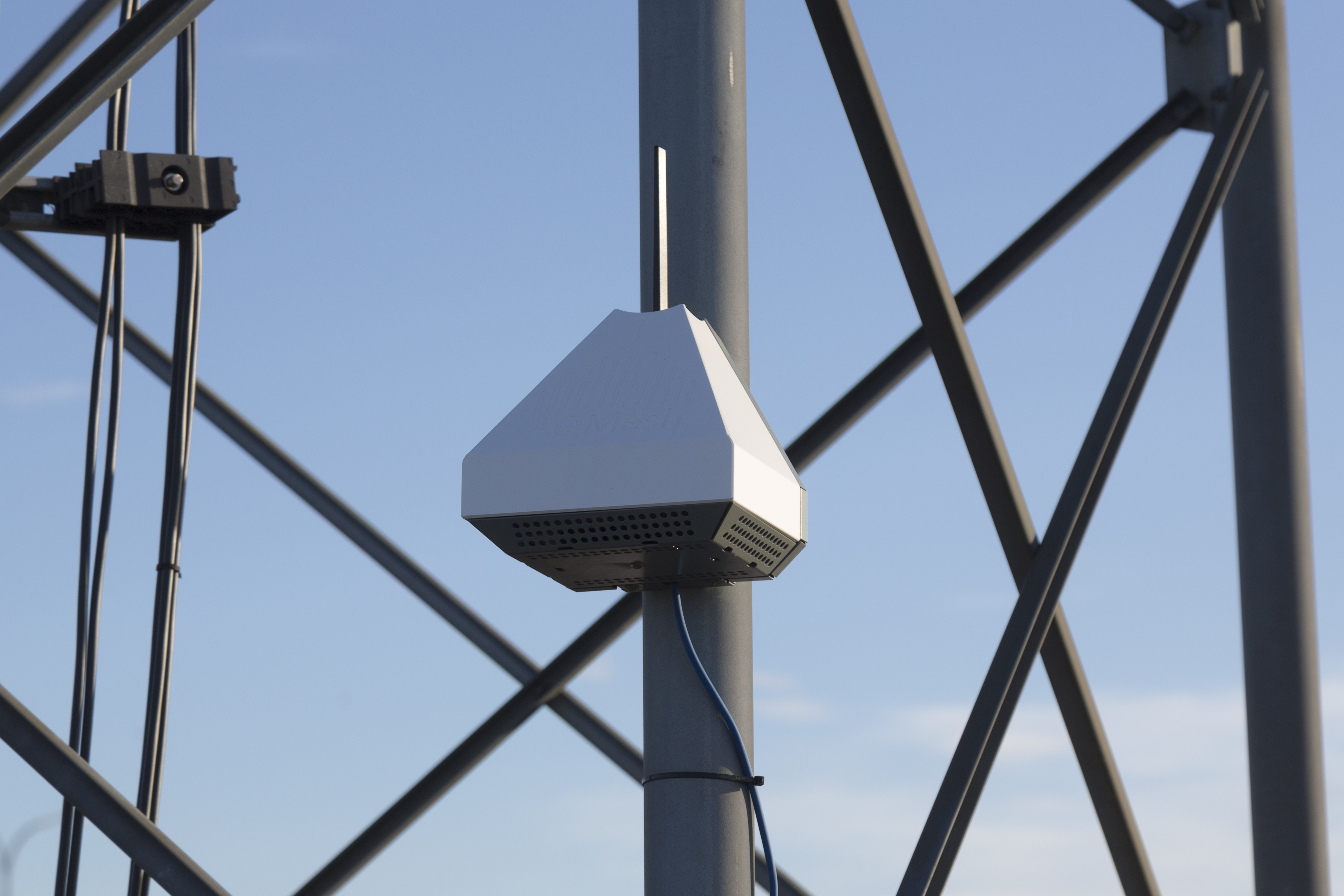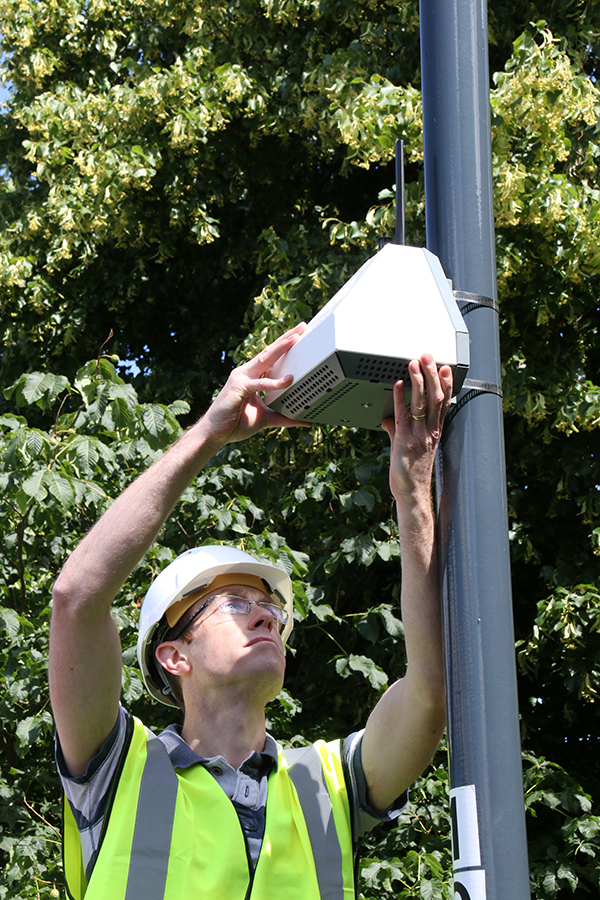 We are often asked by customers whether AQMesh can operate in cold conditions. Long-term use at temperatures well below freezing, with ice and snowfall, is indeed challenging. Cold weather operation has been key to AQMesh – improved upon and proven in the field – for over 10 years. The main features, described below, have been most recently been put to the test in Iceland.
We are often asked by customers whether AQMesh can operate in cold conditions. Long-term use at temperatures well below freezing, with ice and snowfall, is indeed challenging. Cold weather operation has been key to AQMesh – improved upon and proven in the field – for over 10 years. The main features, described below, have been most recently been put to the test in Iceland.
Ölfus, a municipality in Iceland, installed a number of AQMesh pods during December to measure local air quality across the town in relation to the region’s volcanic activity. The pods – supported by Vista, AQMesh distributor for Iceland – will monitor NO, NO2, CO, H2S, SO2 and particulate matter and report the data to the local Environment Agency.
A monitoring network has also been recently installed on a construction site in Reykjavík, measuring dust (PM), NO, NO2, NOx and wind speed and direction, powered by the smart solar pack. AQMesh was chosen because of successful performance in previous deployments in Iceland, as well as ease of installation and minimal maintenance requirements.
The successful operation of AQMesh pods in extremely cold temperatures can be attributed two main factors: power management and weatherproof design.
Power management
Many small sensor air quality monitoring systems use lithium batteries, which carry a recommendation for use only down to 15°C. Lithium ion batteries should not be charged below 0°C – there are risks in trying to do so – and performance is also significantly poorer at low temperatures. This is because lithium ions can plate the anode surface in freezing conditions, reducing battery capacity and increasing resistance.
The AQMesh solar pack uses the heavier but more practical 22Ah lead acid battery, which performs reliably in such temperatures. The AQMesh battery has 264Wh capacity, compared to lithium-based systems which store less than 100Wh solar power. With the battery built into the smart solar pack, capable of powering the pod for 1.5 to 2 weeks without sunlight, the pod can be powered at full capacity over the whole year at surprisingly high and low latitudes. This is particularly significant for relatively power-hungry sampling of PM: AQMesh will continue to sample at the optimal rate and not reduce sampling, which would deviate from MCERTS test conditions, voiding certification. Lead acid batteries are also easier to ship than lithium: a major consideration if you are moving pods around the UK or internationally.
Weatherproof design
Simple design considerations can be vital. Right from the first deployments across North America and Scandinavia, AQMesh design has shown that equipment cannot just survive but provide full functionality through a harsh winter, without maintenance visits. The shape of the pods prevents water, ice and snow building up on the surface, and there are no moving parts that can be affected by freezing temperatures. The AQMesh wind speed and direction sensor option is an ultrasonic anemometer, with no moving parts to wear or recalibrate, making it reliable and low maintenance.
AQMesh pods use a pump for drawing in particles, as opposed to a fan. Fans are more likely to be affected by snow and ice, potentially recirculating the same air if even partially blocked, whereas a pump will still actively draw an air sample.
Data processing on the secure AQMeshData.net server uses correction algorithms based on over 10 years of real-world testing which can compensate for extreme environmental conditions and flag affected data points if necessary.
A network of 50 AQMesh pods in Minnesota, USA, continues to operate smoothly in temperatures as low as -25°C, despite the area being under several feet of snow for long periods of the year. Other deployments include Alaska, Mongolia and Scandinavian regions, all of which experience harsh winter conditions.
For more information and to discuss your potential air quality network deployment contact our experienced team today.




